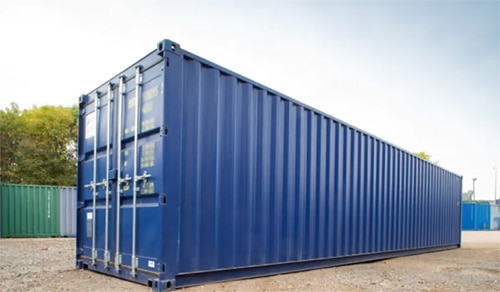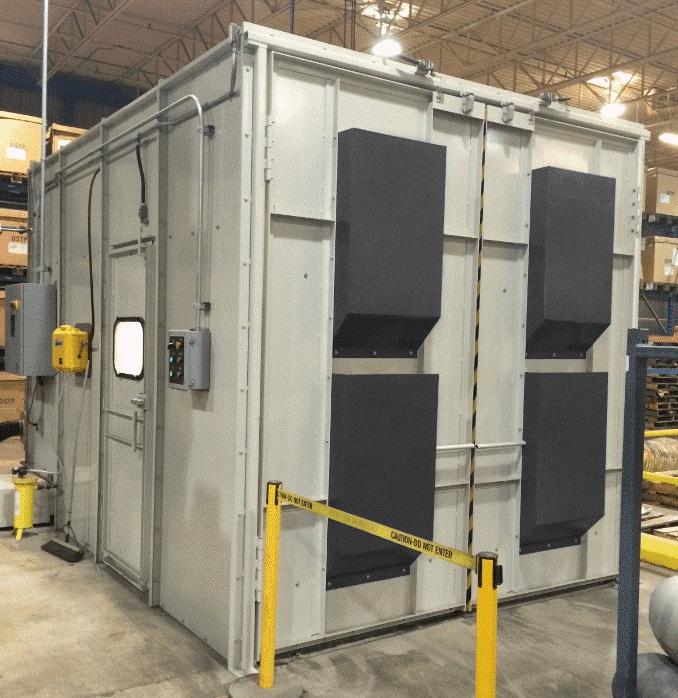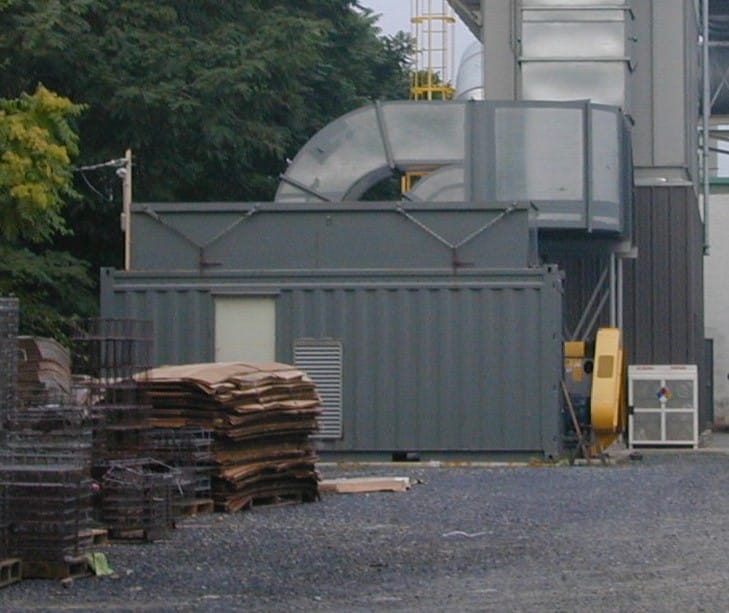Useable space is often a critical element in manufacturing facilities. A quick solution to readily available space is the use of shipping or cargo containers. They are available in many sizes and have been used for schools, housing, cafes, workshops, studios, and even saunas. By design, they are waterproof and constructed of 14-gauge steel. So how are they applied to an industrial ventilation system?

Blast Room – A Cost-Effective Alternate Solution
Industrial dust collection takes many forms and one of those is a need for an intermittent duty blasting booth, where a full pre-engineered blast room is not necessary, or perhaps is not in the budget. SysTech Design has assisted multiple production facilities, including this one in Pittsburgh, Pennsylvania, with a budget-friendly ‘packaged’ blast room, using a 19’ long X 7.5’ wide X 7’ tall storage container and one or more Donaldson Torit Downflow Workstation modules.

As a standalone, the Downflow Workstation is a 45” wide X 96’ tall modular dust collector, with a louvered dirty air inlet located on the unit’s front side, (6) cartridge filters, a self-contained clean air exhaust fan and an easy access dust dropout drawer. The Downflow Workstation (DWS) is a plug and play dust collection solution, shipping fully assembled, with a simple control panel to allow for start/stop functionality and cleaning of the filters via compressed air.
The Downflow Workstation can easily be fit into an opening in the backwall of the storage container and with a few simple modifications, the storage container becomes a dust control booth or specifically a fully functional blasting booth. The storage container must be modified in the field to include supply air louvers in the operator entry doors, as well as a removable protective plate that is placed in front of the DWS inlet, to protect against filter abrasion.
While the modified storage container is not a substitute for a full-scale, continuous duty blasting room, it is more than capable of handling intermittent use and is a fraction of the cost that is associated with a fully engineered blasting room.
Shipping Container Electrical Control Room
Electrical Control Room – Another application used a shipping container as a control room for a dust collection system. The electrical controls were located outside of the production facility due to internal space constraints. The container was fitted with a heater, louvers, man door, lighting, variable frequency drives and dust collection system monitoring equipment.

Shipping containers are just one of the many ways SysTech can help with atypical solutions. Ask us at 800-456-9460.


